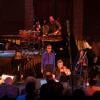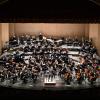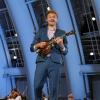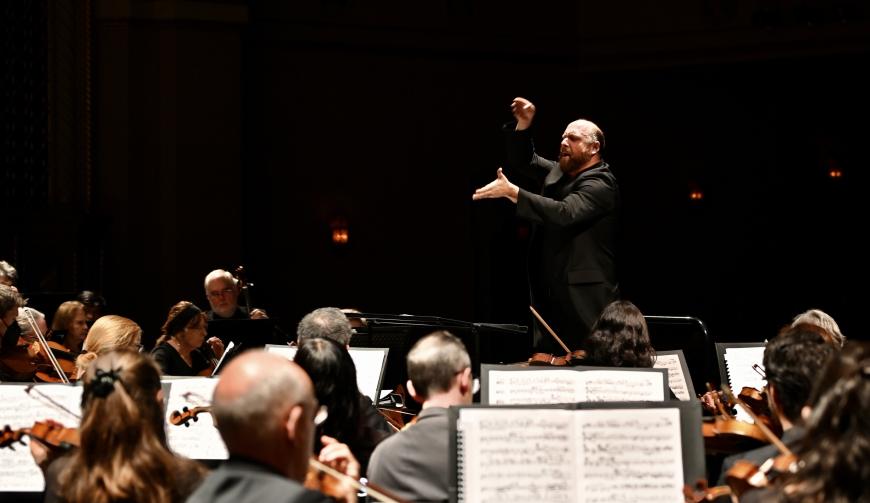
Symphony San Jose presented an imaginative potpourri of a concert, “American Portraits,” on Sunday, Dec. 3 at the California Theatre. Five pieces, each by a U.S. composer, expressed some of the characteristic features of this country.
Interesting as the premise and selections were, what really made this concert go was the bold, energetic, and lusty conducting of guest Christopher Rountree, plus the astonishing responsiveness of the orchestra to his direction.
This was most obvious in the concert’s largest piece, Aaron Copland’s ballet Rodeo, the composer’s 1942 score based on Southwestern folk songs. The fast parts bustled along with winning enthusiasm and powerful rhythms. The slow parts were elegantly graceful. At one point during the concluding “Hoe-Down,” when Copland lets the music’s energy wind down, Rountree ensured that the momentum dissipated entirely, inserting a comic caesura before the music jumped back to life again.
This was the complete Rodeo ballet, not just the “Four Dance Episodes” more commonly heard. The additional material consists of a fifth section, titled “Ranch House Party,” which, according to the program notes, was ghostwritten by Leonard Bernstein, plus a couple of transition passages elsewhere in the ballet. “Ranch House Party” begins with a honky-tonk-style piano solo, played by SSJ pianist Brenda Vahur in an ideal percussive barroom manner.
Rountree’s conducting was even more successful at conveying the somber grace of William Grant Still’s tone poem Darker America. This pioneering 1924 work was intended to depict the sorrows and hopes of African Americans, those two moods represented by contrasting themes played in alternation. This performance displayed the exoticism and distinctive phrasing of this work that lays a light African American flavor over a conservative European stylistic base.
There was one additional older piece on the program, Charles Ives’s Variations on “America” as orchestrated by William Schuman. Ives’s original piece for organ is goofy enough, with the traditional “My County, ’Tis of Thee” tune guyed with various incongruous rhythms and accompanimental figures. Schuman’s orchestration brilliantly reinforces this, even rendering the straight presentation of the theme silly on muted trumpets backed by the col legno tapping of string bows.
The other two works were recent. Valencia by Caroline Shaw is the composer’s arrangement for string orchestra of a quartet piece that is meant to evoke the taste of a Valencia orange. It earns its place in an Americana concert due to the cultivar’s origins in Southern California. From the music alone, you might have guessed that the food being described was something spicier and drier than a sweet orange, but Shaw’s vividly imaginative and quietly explosive writing is charming and effective, as all her compositions are.
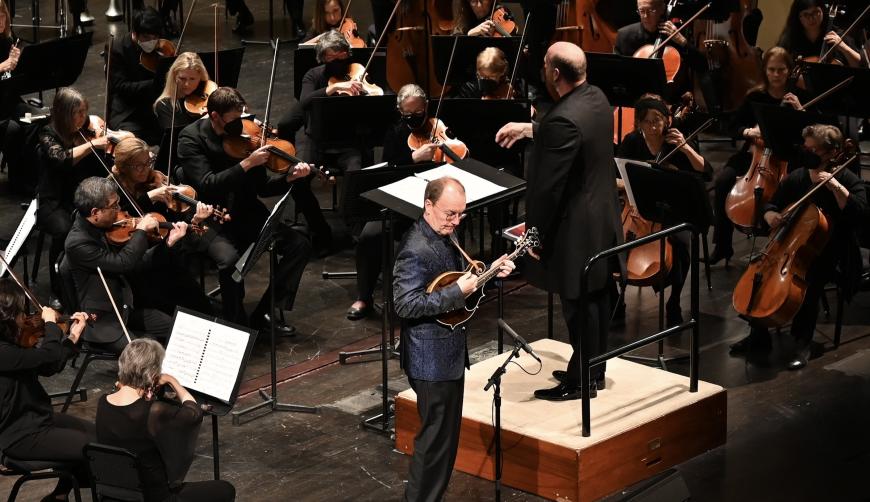
Jeff Midkiff joined the orchestra to play his own Mandolin Concerto, subtitled “From the Blue Ridge.” His instrument on Sunday was a Gibson mandolin, whose sound carries better than a traditional European mandolin. With a microphone in front, it was amplified loudly enough to stride over the entire ensemble while still remaining gentle.
Midkiff’s roots are in bluegrass music, especially the work of Bill Monroe, the mandolinist who is considered the founder of the genre. Midkiff hails from Roanoke, Virginia — just below the Blue Ridge Mountains of his composition’s title — so he has a special affection for Monroe’s instrumental piece “Roanoke,” which he incorporates into his concerto and performed as an encore.
Midkiff’s playing style makes only occasional use of the tremolo trills that are generally so characteristic of mandolin music. He devotes most of his attention to fast fingerpicking in the manner of Monroe, alternating it with slower fingerpicking, chordal strumming, and, especially in the slow movement, arpeggiated chords.
The orchestra contents itself with quiet harmonic backing for Midkiff’s display, but often enough the players join in with the fast notes, sometimes in unison with the mandolin, sometimes picking up its line, and sometimes in competition with it, especially in the finale, which takes on some of the character of a jam session with cheerful noise.
This is a blend of bluegrass and classical rather than a cross between two diverse idioms. Midkiff is an orchestral clarinetist as well as a bluegrass mandolinist, so he’s a native in both fields. His piece thus resembles Mark O’Connor’s violin concertos, another variety of Americana that has been heard from Symphony San Jose. O’Connor and Midkiff both write genial, friendly music whose bluegrass base, inflected with a touch of jazz, keeps the classical side entirely consonant, if occasionally adventurous in orchestration. It’s pleasant to listen to, it displays the soloist’s skill, it’s thoroughly competent in its composition, and it reasonably expects the listener to ask for nothing more.


